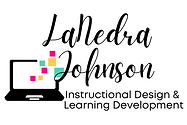.png)
Quick View
Project Overview
Problem
Coming off of the height of a Pandemic, many organizations are having a difficult time with retaining employees, morale within the workplace, and productivity within departments. This Self-Paced eLearning Course was created to train organizations on how to improve retention, increase productivity, and improve the morale and relationships within their organization by implementing techniques that will foster and cultivate positive work environments. eLearning was selected as the delivery method because it would allow for an ongoing means of providing learning and become an ongoing resource for employers and employees.
Learning Objectives
By the end of this course, learners will be able to
-
define positive culture
-
identify the characteristics of positive culture in the workplace
-
implement practices within your organization that can promote a positive work environment
Audience
The ideal learner for this eLearning course is,
-
corporate businesses looking to improve the culture within their organization
-
employees who are self-aware of the role they play in fostering a positive work culture
Date Completed
The course was initially completed in April 2022. Updates will continue to be made.
Tools Used
To create this course, I used:
-
Mindmeister
-
Trello
-
Articulate Rise 360
-
Vyond
-
Snagit Editor
The Process
Action Mapping
To begin the process, I created an action map based on online research I conducted to determine the main causes for organizations suffering from unhappy employees within the organization and the causes that may lead to a decrease in retention and productivity.
On the action map, I identified actionable steps organizations can take to improve the culture in their work environment.

Course Outline
I used Trello to outline the eLearning Course for more detailed planning and visual purposes. This allowed me to narrow the focus of topics that I wanted to cover within the lesson and ensured that I touched on everything I wanted to do continued research on.
Course Outline (Iteration)
Once I was ready to begin creating the course inside of Articulate Rise 360, I realized that some changes needed to be made. During this iterative process, I began to consider how the learners would digest the information.
The Design & Development Process
Due to the amount and type of information that would be needed for this particular course, I found that Rise would be the best choice of tools because it allowed me to provide lots of information and would allow the learner(s) to complete the course at their own pace. After entering Articulate Rise, I was able to get a better idea of exactly how I wanted the course to look and what direction I wanted to take with dividing and chunking the lessons. I realized that I did not need as many lessons as I had initially thought and was able to shorten the lessons. Because there are fewer lessons, I wanted to ensure that they were rich in content and focused on key information.
Rise was also selected because it allowed the course to be mobile-friendly and easily accessible to employers and employees of all business types.
Priorities
Delivery Method: Asynchronous eLearning, Self-paced
Instructional Alignment: After determining the instructional objectives, I was intentional in conducting research and creating content that would ensure I provided content and practice activities that aligned with the overall goals and objectives of the course. I used the instructional objectives to guide the creation of the wrap-up quiz at the end of the course.
Culturally Responsive: I made sure to include free stock images that reflected a diverse audience in various workplace settings.
Management of Cognitive Overload: Because the course is pretty information-heavy, I wanted to avoid cognitive overload. As a result, I decided to chunk the information into smaller sections, which included the use of the continue button to prevent a winding page of information.
Meaningful Interactions: While I wanted the learner to interact with the course, I did not want to overdo it with the number of interactions included. I made sure to only include interactions that aligned with the purpose, goals, and objections of the course and that would allow the user to check their knowledge, while providing immediate feedback, on what they'd learned.
Attention to Visual Design: I considered the learner and the purpose when determining visual design features, such as color choice, photo relevancy, and the repetition of colors and font sizes used within the course. Because I wanted to ensure the learner was able to determine what was most important within each lesson, I was careful about when words/phrases I selected for a bold print or separated from the rest of the text. I made sure to select photos that correlated with each subheading to show consistency within each lesson.
Video Scripting

.png)